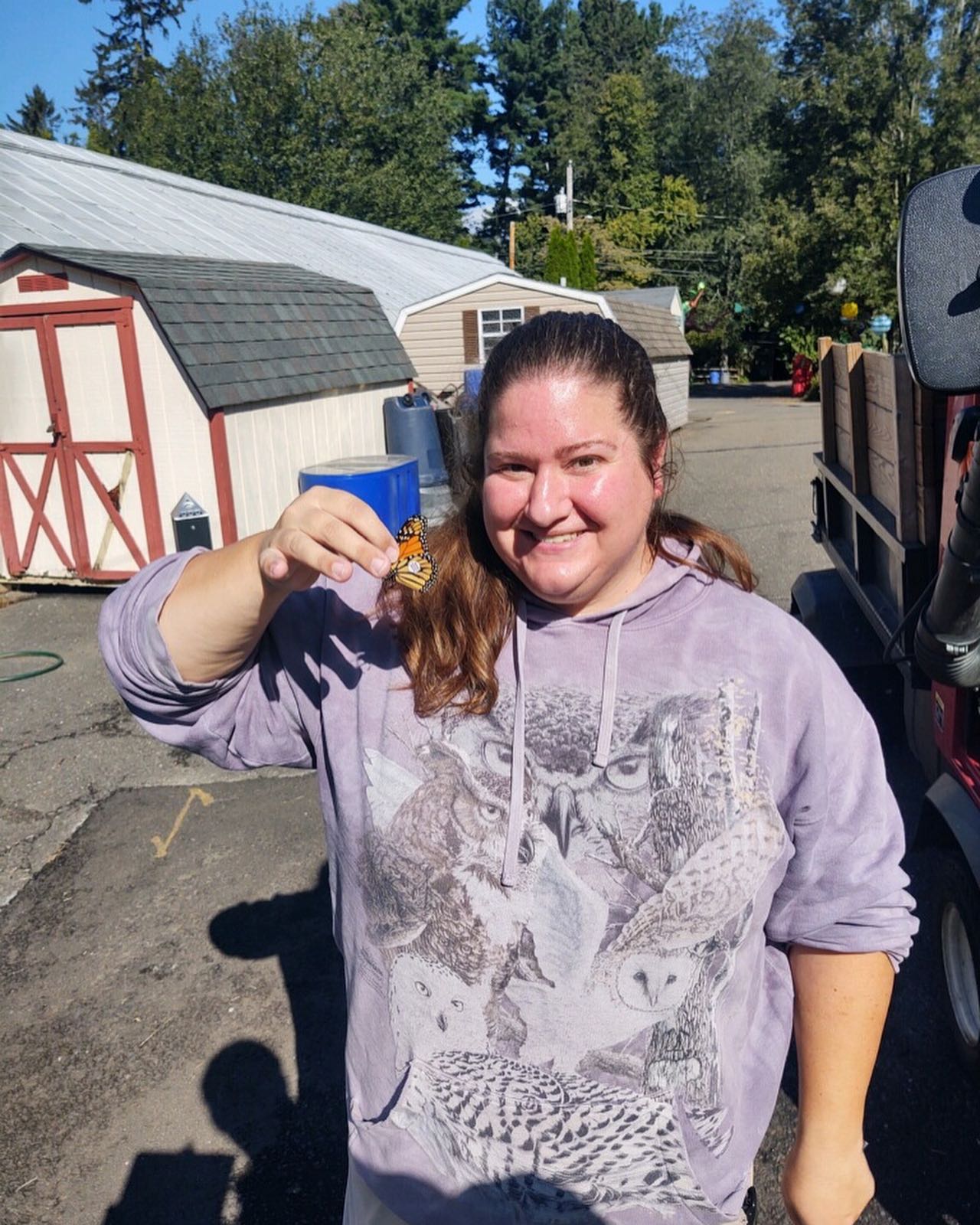Summary:
– The Monarch butterfly tagging season is underway at the Zoo, and it’s peak migration season for these majestic creatures.
– Eastern monarch butterflies travel thousands of miles to their wintering sites in Mexico’s Monarch Butterfly Biosphere Reserve.
– MonarchWatch encourages people to report sightings of tagged butterflies to gather valuable data.
– Tagging monarch butterflies helps scientists study migration patterns, population dynamics, and conservation efforts.
– The tagging process involves carefully capturing, tagging, and releasing monarch butterflies.
If you find yourself at the Zoo this week, you may notice something exciting: Monarch butterfly tagging is underway! It’s an incredibly busy time for MonarchWatchers, as this week marks the peak season for migrating monarchs. So, if you spot a butterfly with a tag, report it to MonarchWatch or Jen Farrell at jfarrell@beardsleyzoo.org. Your sighting could play a vital role in understanding the remarkable journey of these beautiful creatures.
Every year, eastern monarch butterflies embark on an extraordinary journey. They travel thousands of miles from Canada and the United States to their wintering sites in the forests of Mexico. It’s an arduous feat for these delicate insects. Still, they are driven by an innate instinct that propels them to find shelter from the wind, rain, and low temperatures that would otherwise be detrimental to their survival.
The Monarch Butterfly Biosphere Reserve in Mexico is a wondrous place where these flying wonders find solace. It’s a sanctuary where they cluster together, forming breathtaking masses of orange and black. Imagine the awe-inspiring sight of millions of monarch butterflies huddled together, fluttering wings creating a symphony of vibrant colors.
But what exactly is the purpose of tagging these butterflies? Well, the answer lies in the invaluable information that can be gathered from their journeys. Monitoring the migration patterns of monarch butterflies helps scientists understand their population dynamics, ecological interactions, and conservation needs. By participating in butterfly tagging, you become part of a bigger picture—a collective effort to unlock the secrets of these incredible creatures.
The process of tagging monarch butterflies is a precise and delicate endeavor. It involves capturing the butterflies, carefully handling them, and attaching lightweight tags to their wings. The tags bear a unique identification number, allowing researchers to track individual butterflies throughout their migration. It’s like giving each butterfly a passport to document their travels.
You might wonder how these tiny tags stay attached to the butterflies’ wings. The tags are designed to ensure they do not impede the butterflies’ ability to fly or navigate. They are affixed with a special adhesive that guarantees a secure attachment without causing harm. Once the tagging is complete, the butterflies are gently released back into their natural habitat, ready to embark on their incredible journey.
As you can imagine, the data collected from reported sightings of tagged butterflies is crucial for scientists. It provides valuable insights into these delicate creatures’ migration routes, timing, and destination preferences. Moreover, tracking the movements of monarch butterflies helps identify potential threats, such as habitat loss or climate change, that could impact their survival.
Participating in monarch butterfly tagging is not only a fascinating and educational experience but also a tangible way of contributing to conservation efforts. By reporting your sightings, you become part of a network of passionate individuals dedicated to understanding and protecting these magnificent insects. Together, we can ensure that future generations will continue to witness the extraordinary annual migration of monarch butterflies.
So, next time you visit the Zoo and spot a monarch butterfly with a tag fluttering by, take a moment to appreciate its remarkable journey. Observe its grace and beauty, knowing that your sighting holds significance beyond its captivating appearance. Report it to MonarchWatch, become part of the larger conversation about conservation, and help ensure the survival of these enchanting creatures.
Now, go out and embrace the beauty of nature, for it never ceases to amaze and inspire us. The world is full of wonders, big and small, and the monarch butterfly is undoubtedly one of them. Let us celebrate these remarkable creatures and strive to protect their delicate habitats so that generations can experience the joy and awe they bring our lives. Happy monarch butterfly watching!
*****
Source Description
Monarch butterfly tagging is underway at the Zoo—it’s a busy week for MonarchWatchers! This week marks peak season for migrating monarchs. If you see a butterfly with a tag, you can report it to MonarchWatch or Jen Farrell at jfarrell@beardsleyzoo.org!
Every year, eastern monarch butterflies travel thousands of miles from Canada and the U.S. to their wintering sites in the forests of Mexico. In what is known as the Monarch Butterfly Biosphere Reserve, they cluster to shelter from wind, rain and low temperatures.


